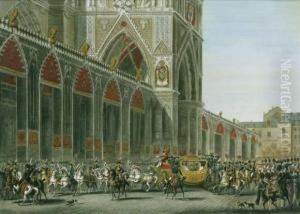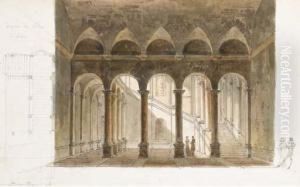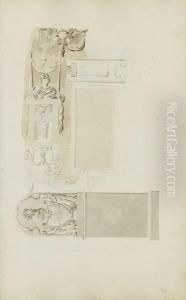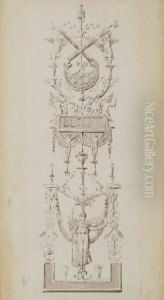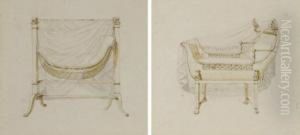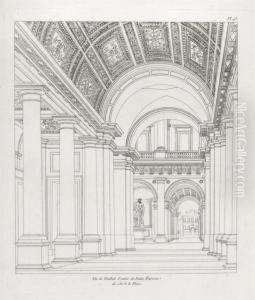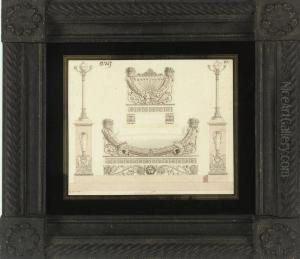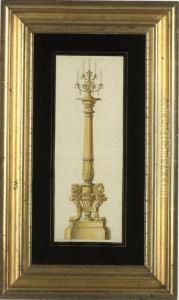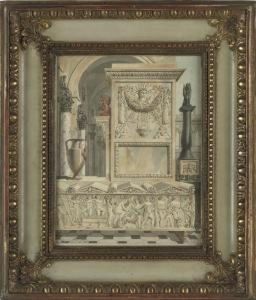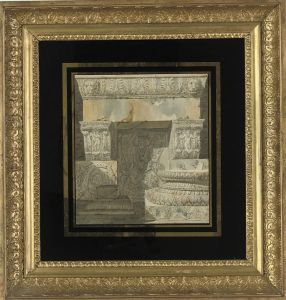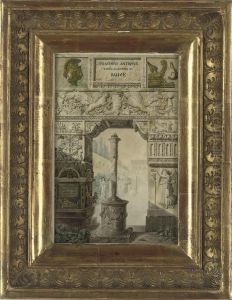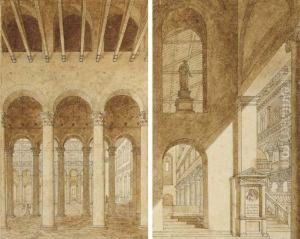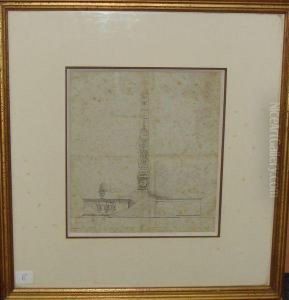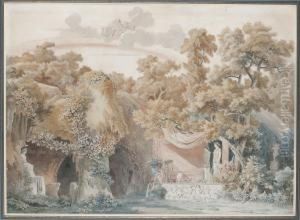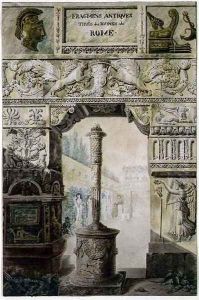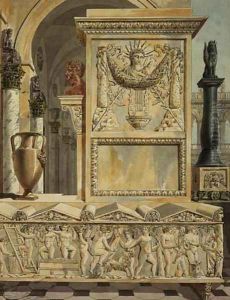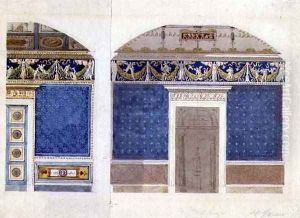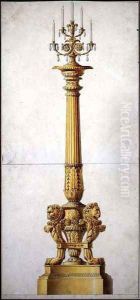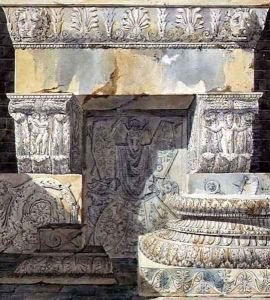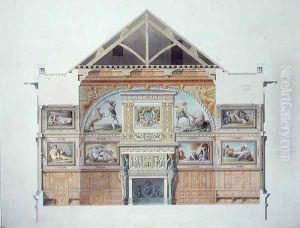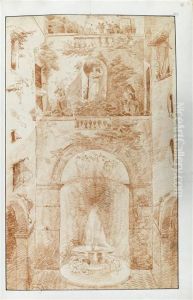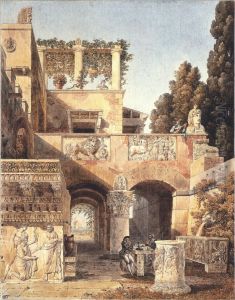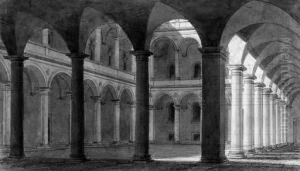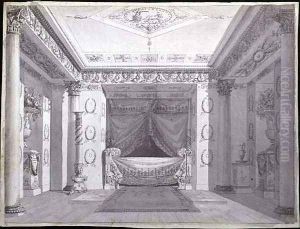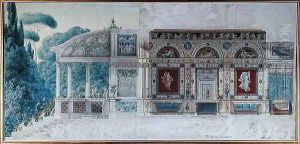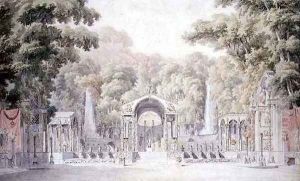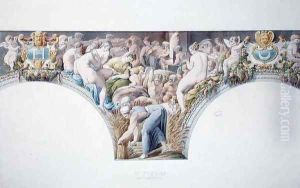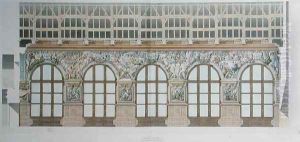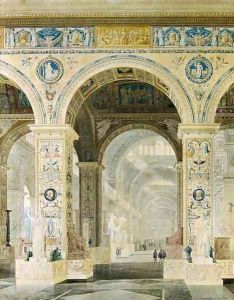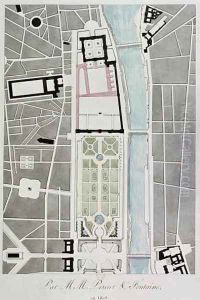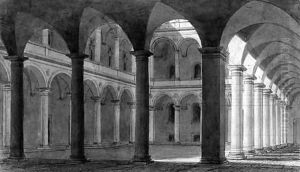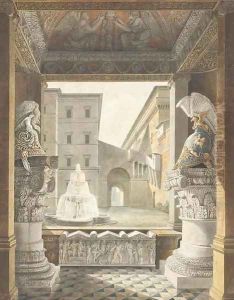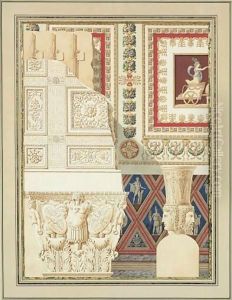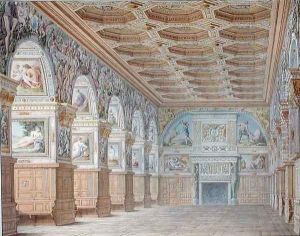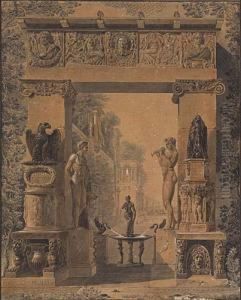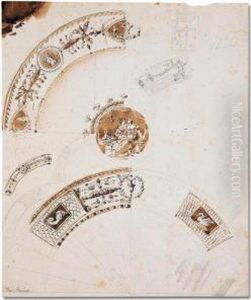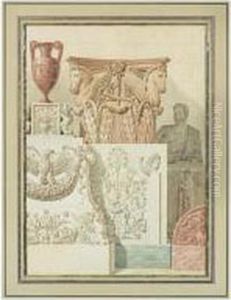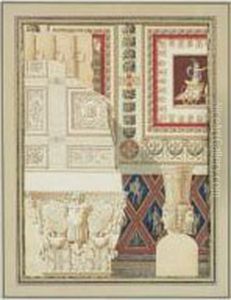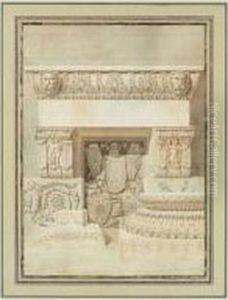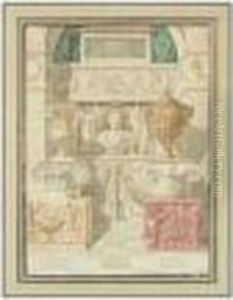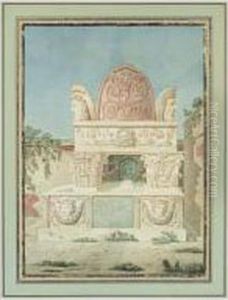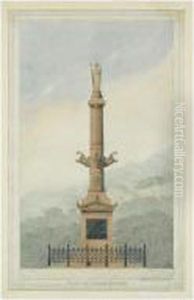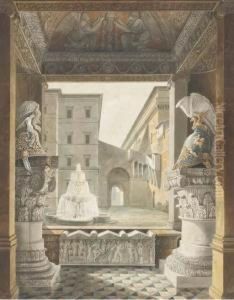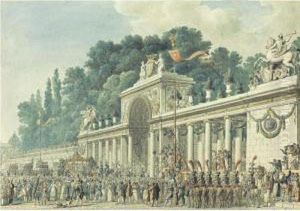Charles Percier Paintings
Charles Percier was a prominent French architect and interior designer, born on August 22, 1764, in Paris, France. He is widely recognized for his instrumental role in developing the Empire style under the patronage of Napoleon Bonaparte. Percier studied at the Royal Academy of Architecture and won the prestigious Prix de Rome in 1786, which allowed him to study in Rome for an extended period. During his time in Italy, he was deeply influenced by the ancient Roman architecture, as well as the Renaissance and Baroque styles.
After returning to France, Percier collaborated with his close friend and fellow architect Pierre François Léonard Fontaine. The two formed a partnership that would become highly influential in French architecture. Together, they were appointed as official architects to Napoleon and were responsible for the design and decoration of many government buildings and imperial residences, including the transformation of the Tuileries Palace and the design of the Arc de Triomphe du Carrousel.
Percier's work is characterized by its grandeur, symmetry, and the incorporation of motifs inspired by antiquity, which became hallmarks of the Empire style. This style was marked by its luxurious materials, bold geometric forms, and imperial iconography, all of which were intended to convey the power and glory of Napoleon's regime.
Apart from his architectural projects, Percier also co-authored a book with Fontaine titled 'Recueil de décorations intérieures' (Collection of Interior Decorations), which had a significant impact on interior design in the early 19th century. The publication illustrated designs for furniture, decorative objects, and interior layouts in the neoclassical style.
Charles Percier's influence extended beyond France as the Empire style spread across Europe and into America. His architectural and decorative legacy continues to be admired for its clarity, order, and historical references. Charles Percier died on September 5, 1838, in Paris, leaving behind a lasting impact on the world of architecture and design.
